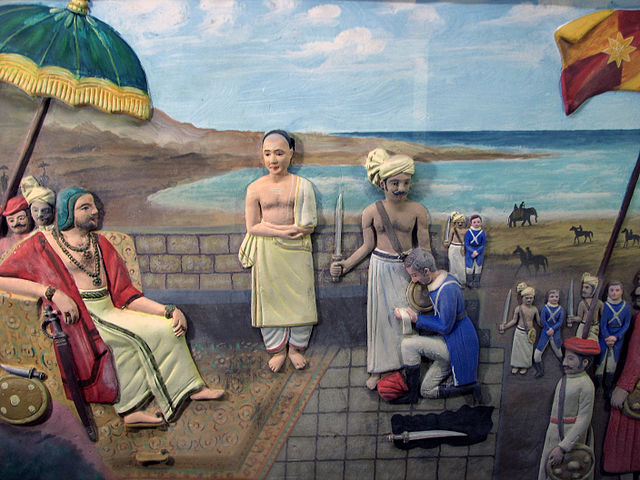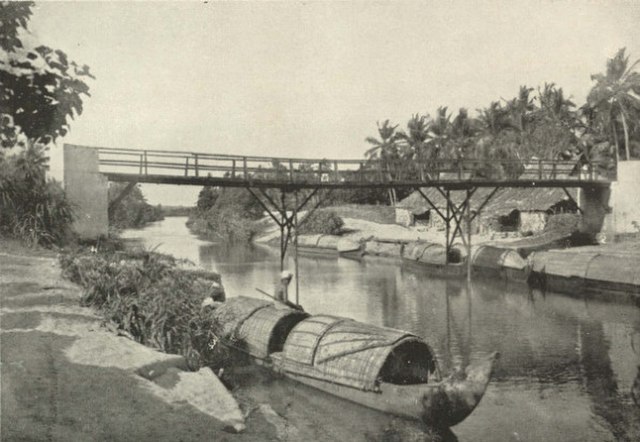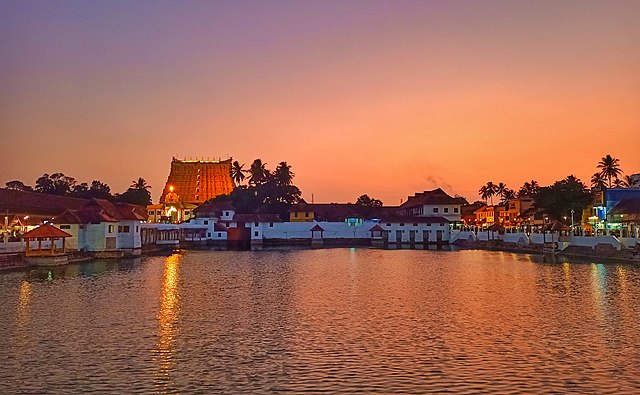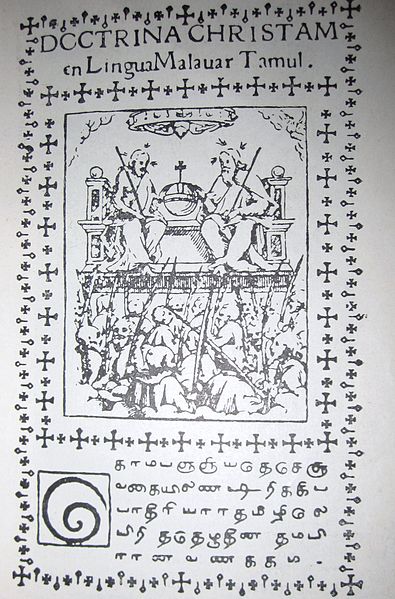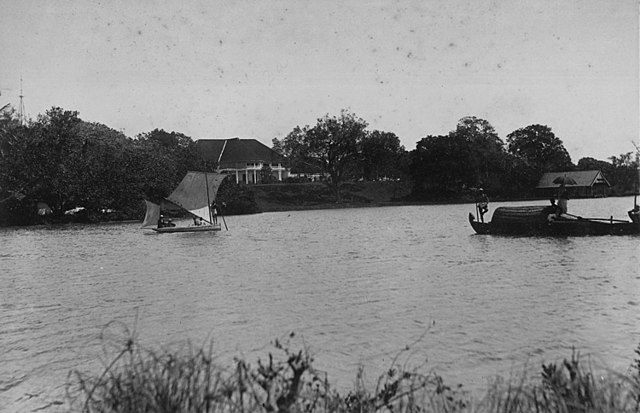Padmanabhapuram Palace, also known as Kalkulam Palace, is a Travancore-era palace located in Padmanabhapuram in the Kanyakumari district of the Indian state of Tamil Nadu. The palace is owned, controlled and maintained by the government of the neighbouring state of Kerala.
Padmanabhapuram is the former capital city of the erstwhile Hindu kingdom of Travancore. It is around 20 km from Nagercoil, 39 km from Kanyakumari town and 52 km from Thiruvananthapuram in Kerala. The palace is complex inside with an old granite fortress around four kilometers long. The palace is located at the foot of the Veli Hills, part of the Western Ghats. The river Valli flows nearby.
Padmanabhapuram Palace, main entrance with the clock tower on the left corner
Depiction at Padmanabhapuram Palace of Eustachius De Lannoy of the Dutch East India Company surrender to Maharaja Marthanda Varma of the Kingdom of Travancore after the Battle of Colachel.
Padmanabhapuram Palace exterior facade
Navarathri mandapam - dance floor
The Kingdom of Travancore, also known as the Kingdom of Thiruvithamkoor or later as Travancore State, was an Indian kingdom that lasted from c. 1729 until 1949. It was ruled by the Travancore Royal Family from Padmanabhapuram, and later Thiruvananthapuram. At its zenith, the kingdom covered most of the south of modern-day Kerala and the southernmost part of modern-day Tamil Nadu with the Thachudaya Kaimal's enclave of Irinjalakuda Koodalmanikyam temple in the neighbouring Kingdom of Cochin. However Tangasseri area of Kollam city and Anchuthengu near Attingal in Thiruvananthapuram were parts of British India.
A Canal scene in Travancore.
Sree Padmanabha Swamy was the national deity of the Kingdom of Travancore.
Thambiran Vanakkam was printed at Kollam, the capital of Venad in 1578, during the Portuguese Era. It holds the record of the first book printed in any Indian language. It was written in the language Lingua Malabar Tamul, which was spoken in southern Kerala (Kollam-Thiruvananthapuram-Kanyakumari area) during the medieval period.
The British Residency in Quilon, where the resident of Travancore resided


